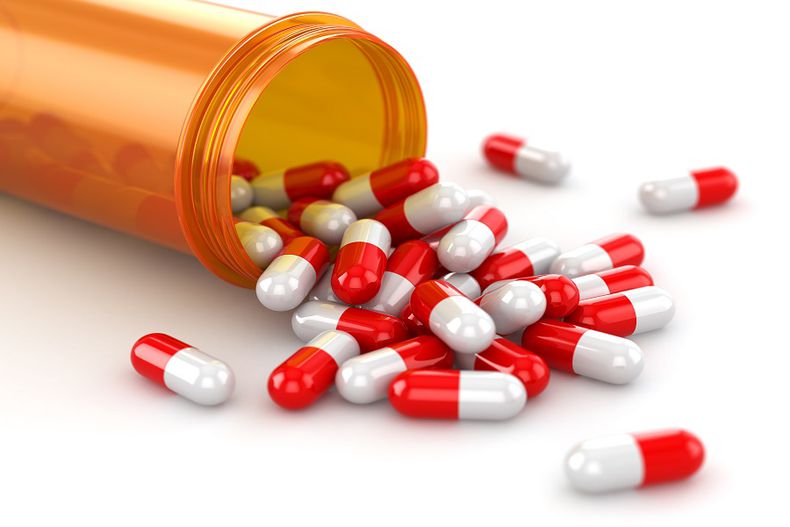Are We Heading Towards A Post-antibiotic Age?
Antibiotic. We have been using this term, especially when we (or our family members) fall sick, since it is the most prescribed treatment in modern medicine.
Let's being with the basics. What does an antibiotic mean?
It is a substance that is capable of destroying or weakening certain microorganisms, especially bacteria or fungi, that cause infections or infectious diseases. Whether oral, topical or through injection, antibiotics help cure many diseases, including some common ones such as urinary tract infections, strep throat, and pneumonia.
Don’t worry, this is no biology lesson. Some facts have recently jolted medical associations across the globe. For instance,
- In 2012, the World Health Organization reported a gradual increase in resistance to HIV drugs, albeit not reaching critical levels. Since then, further increases in resistance to first-line treatment drugs have been reported.
- In 2013, many cases were reported of multidrug-resistant tuberculosis (MDR-TB), falciparum malaria, artemisinin-based combination therapies.
To understand why this decreasing effectiveness of antibiotics and other antimicrobial agents is a global concern, we need to know what antimicrobial resistance means. Technically, this means that the microorganism has become resistant to an antimicrobial drug that was originally effective for treatment of infections caused by it. Resistant microorganisms (e.g. bacteria, fungi, viruses, parasites) are able to withstand attack by respective antimicrobial drugs, so as to render standard treatments ineffective and let infections persist, increasing the risk of spread to others. As a result, common infections would kill once again, while surgeries and complicated therapies--which are rely on the effectiveness of antibiotics--would be under threat. This phenomenon of microbes becoming completely resistant to treatment, also known as the antibiotic apocalypse, could plunge medicine back into the dark ages.
Medical researchers globally are conducting experiments in this domain, in an effort to gauge the amount of damage that can be caused, or probably already done. Chinese scientists identified a new mutation, dubbed the MCR-1 gene, that prevented colistin from killing bacteria. The resistance is also being spread between a range of bacterial strains and species, including E-coli, klebsiella pneumoniae and pseudomonas aeruginosa. According to a hospital in China, they are dealing with multiple cases where they are struggling to find an antibiotic every month. They are concerned that without effective anti-infective medicines at hand, many standard medical treatments will either fail or turn into very high-risk procedures. Some diseases might find cure through high-cost procedures, but that will again pose an economic problem to the society.
The situation in Europe is not too different. In spite of the fact that EU has been quite firm on control of livestock antibiotics for many years, it is an abundant user of colistin. Toxic, human medicine was forced to turn back to colistin because KPCs in the US, NDM in South Asia, OXA in the Mediterranean were all resistant to carbapenems, which is non-toxic category of antibiotics used for the treatment of infections caused by multidrug-resistant (MDR) bacteria. That’s why it is the most worrisome trend. Further, in many areas, more than half the infections caused by one major category of bacteria--Gram-negative--involve species resistant to carbapenem drugs.
Upon investigation, scientists have come up with two major reasons for the increasing failure of antibiotics in fighting these microorganisms:
1) Overuse of antibiotics in agriculture to promote livestock growth leads to multiplication of drug-resistant bacteria that are capable of spreading via human travel. The inappropriate use of antimicrobial drugs, including in animal husbandry, and poor infection prevention/control practices contribute to further emergence and spread of antimicrobial resistance. In the US alone, the daily consumption of antibiotics amounts to 51 tons, of which around 80% is used in livestock; a little less than 20% is for human use, and the rest is split between crops, pets, and aquaculture.
2) Overuse of antibiotics and antimicrobial chemicals in our modern lifestyle is another major cause of proliferation of drug-resistant bacteria. The most common example is that of antimicrobial agent called triclosan, which is found in all antibacterial soaps, toothpastes, mouthwash, detergents, and even toys and kitchen utensils.
Scientists and researchers are already doing their bit to control a possible epidemic. Till then, we, as laymen, can help ourselves through some easy control tips, as suggested by the WHO:
- Washing hands and avoiding close contact with sick people to prevent transmission of bacterial infections and viral infections such as influenza or rotavirus, and taking precautions to prevent the transmission of sexually-transmitted infections;
- Getting vaccinated, and keeping vaccinations up to date;
- Using antimicrobial drugs only when necessary and prescribed by a certified health professional;
- Completing the full treatment course, as prescribed by medical practitioner;
- Never sharing antimicrobial drugs with others or using leftover prescriptions.
The WHO’s 2014 report on global surveillance of antimicrobial resistance has revealed that antibiotic resistance is no longer a prediction for the future; it is happening right now, across the world. and the time is not far when common infections and minor injuries could turn fatal. Therefore, we have no choice but to act, NOW!















